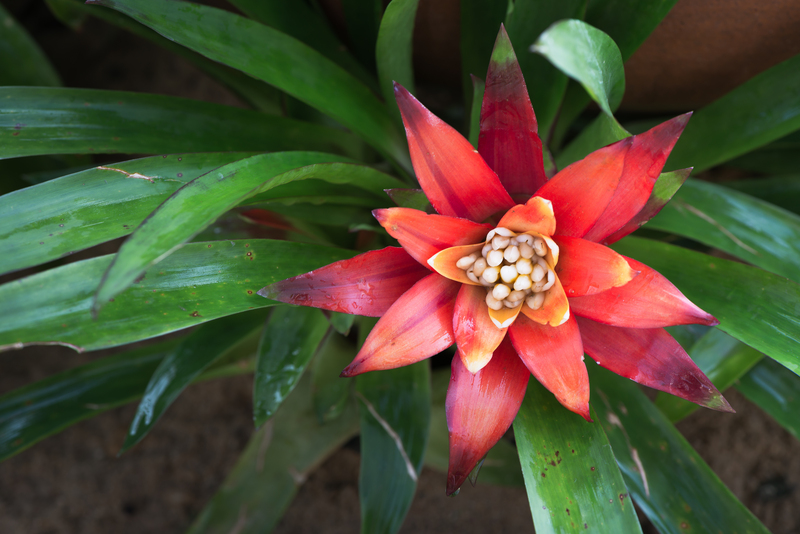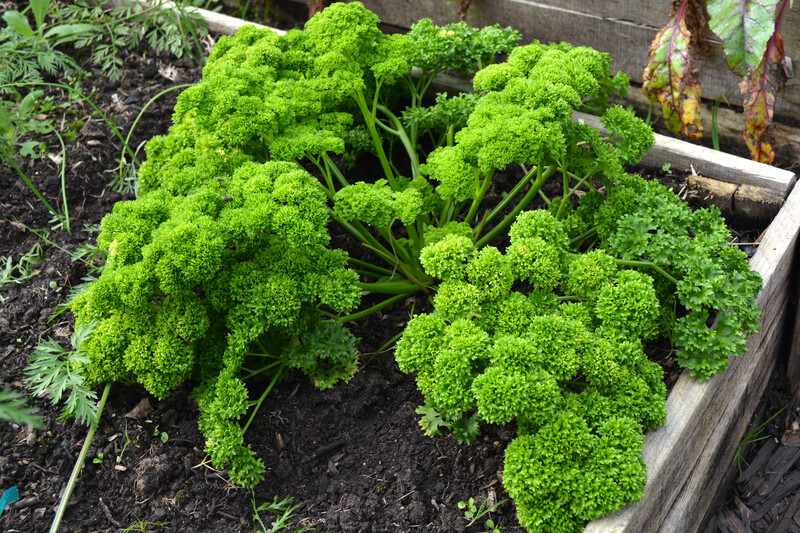Crafting Your Dream Garden Through a Child's Eyes
Posted on 22/08/2025
Crafting Your Dream Garden Through a Child's Eyes: A Whimsical Path to Outdoor Bliss
Imagine stepping into your backyard, eyes wide with wonder, and discovering a place where adventure, creativity, and nature come alive--this is crafting your dream garden through a child's eyes. Children possess an instinctive curiosity and creativity that turn even the simplest patch of grass into a magical world. By incorporating their perspectives, adults can transform gardens into vibrant, engaging, and nurturing outdoor havens that spark joy for the whole family.
Why See Your Garden Through a Child's Perspective?
Viewing your garden from a child's viewpoint unlocks unlimited potential for discovery and imagination. Traditional adult gardens focus on aesthetics, order, and function, but dream gardens for kids prioritize play, exploration, and sensory experiences. When adults shift their perspective, gardens evolve into dynamic spaces for growth, learning, and family bonding.
- Enhanced Creativity: Children's gardens teem with imaginative features, transforming ordinary areas into fantastical realms.
- Interactive Learning: Engaging with nature fosters curiosity and a lifelong love for the environment.
- Inclusive Fun: These gardens are enjoyable for all ages, inviting every family member to partake in hands-on adventure.

The Child's Eye View: What Makes a Garden Magical?
A kid-centric dream garden teems with movement, colors, surprises, and endless things to touch, feel, and explore. Incorporating this child-like wonder means considering the following foundational elements:
Sensory Features to Ignite Curiosity
- Textures: Velvety lamb's ear, bumpy pine cones, smooth pebbles, and rough bark offer tactile learning opportunities.
- Scents: Lavender, mint, lemon balm, and fragrant flowers fill the air with captivating aromas.
- Sounds: Wind chimes, rustling grasses, bird feeders, and water features craft an orchestra of nature's music.
- Colors: A rainbow of blooms, butterfly-attracting plants, and painted stepping stones entice the eye and fuel imagination.
For children, a dream garden isn't static--it evolves with the seasons, offering continual surprises around every corner.
Interactive Play Spaces and Imaginative Zones
- Secret Hideaways: Willow tunnels, tents made from bean plants, or shrubs that form small leafy forts beckon kids to explore and retreat.
- Musical Corners: Outdoor xylophones, pots for drumming, or wind clackers let kids express themselves sonically in the open.
- Planting Patches: Dedicating a section for kids to dig, plant, and harvest teaches responsibility and pride.
- Nature Art Stations: Areas where twigs, leaves, pebbles, and flowers become supplies for art create endless innovation.
Designing a garden through a child's eyes means layering play and learning everywhere you look.
Step-by-Step: How to Craft Your Garden Dream the Kid's Way
Ready to transform your outdoor space into a dream garden? Here's a comprehensive, child-inspired blueprint for designing, planting, and growing a garden that captures the pure joy of childhood discovery.
Step 1: Involve Children in the Planning Process
Start by engaging the young explorers themselves. Ask them:
- What's your favorite thing to do outside?
- Which colors and scents do you enjoy?
- Are there bugs, butterflies, or birds you'd love to see?
- Would you like hidden spaces or places to climb?
Step 2: Map Zones for Play, Rest, and Discovery
Dream gardens for children and families benefit from distinct zones. Consider these areas:
- Active Play Zones: Swings, balance logs, obstacle paths, or climbing rocks fuel energy and encourage movement.
- Quiet Retreats: Hammocks, reading nooks, or shaded seats offer calm escapes for daydreaming.
- Discovery Corners: Butterfly gardens, bug hotels, or mini wildlife ponds kindle curiosity about the natural world.
- Creative Studios: Outdoor chalkboards or table spaces for nature crafts foster imagination.
Step 3: Choose Kid-Friendly, Interactive Plants
Plants set the tone for the entire garden, so select varieties that offer hands-on interaction, vivid visuals, and safe exploration. Top choices include:
- Sunflowers: Towering stems and vibrant blooms provide shade, seeds to harvest, and a sense of accomplishment.
- Sensory Herbs: Mint, basil, and lavender are fun to pick, sniff, and taste.
- Nasturtiums: Edible blooms add bursts of color and peppery flavor to salads.
- Snapdragons: Their dragon-shaped blossoms inspire storytelling and gentle touch.
- Pumpkin Patches: Watching pumpkins grow from tiny green orbs to Halloween-worthy wonders delights little ones.
Step 4: Add Educational and Magical Features
A child's dream garden blurs the lines between learning and play. Integrate features like:
- Weather Stations: Rain gauges, wind socks, and homemade sundials encourage daily observation.
- Bug Hotels: These provide homes for pollinators and a captivating peek into insect life cycles.
- Stepping Stone Paths: Paint stepping stones with shapes, colors, or animal prints to aid sensory development while creating an enchanted trail.
- Fairy Houses or Gnome Villages: Small figurines, doors in tree stumps, or tiny furniture foster imaginative play.
- Water Play: Splash tables, streams, or digging for hidden "fossils" create endless engagement on warm days.
Simple DIY projects--like bird feeders or recycled planters--provide moments of bonding while teaching sustainability.
Step 5: Emphasize Seasonal Change and Sustainability
Highlight the rhythms of nature by planting for all four seasons and teaching children about growth cycles:
- Spring Bulbs: Plant tulips, crocuses, and daffodils for an early riot of color.
- Summer Fruits: Strawberries, raspberries, or tomatoes enable tasting the literal fruits of their labor.
- Autumn Leaves: Plant maples or oaks for a breathtaking fall palette and crunchy treasure hunts.
- Winter Interest: Evergreens, birdhouses, and feeders invite wildlife, making the garden lively even in the cold.
Creative Garden Features to Inspire Kids--and Adults
Crafting your dream garden with children allows for endless invention. Popular ideas include:
- Labyrinths or Maze Paths: Whether made from hedges or tall grasses, these invite exploration and problem-solving.
- Mud Kitchens: Outdoor play kitchens with old pots and pans encourage sensory culinary artistry.
- DIY Scarecrows or Garden Totems: Let kids express themselves by building creative guardians for the garden.
- Pallet Stages or Outdoor "Theaters": Simple platforms become the setting for plays, music, and storytelling.
- Observation Benches: Inside a butterfly glade or near a busy flowerbed, benches invite quiet reflection and shared discovery.
The more playful and interactive an outdoor space, the more likely kids (and parents) will cherish time spent together in it.
Safety and Accessibility: Key to a Child-Inspired Garden
Dream gardens must balance magic with mindfulness. Ensure your garden is:
- Free from toxic plants (like foxglove, nightshade, or oleander).
- Fenced and protected from neighboring hazards (roads, ponds, or aggressive animals).
- Equipped with soft landings (mulch, grass, or sand) in high-play zones.
- Accessible for little hands--with kid-friendly tools, low planters, and easy-to-reach produce.

Long-Term Benefits: Learning, Bonding, and Wellbeing
Designing a dream garden with children:
- Boosts physical health through active play and gardening tasks.
- Enhances mental health with relaxing green spaces and a sense of accomplishment.
- Fosters environmental literacy and responsibility from hands-on learning.
- Strengthens family connections as every planting, harvest, and discovery is shared.
Growing Memories: The Real Harvest
Ultimately, crafting your dream garden through a child's eyes is about creating a tapestry of memories--laughter threading through sunflower stalks, muddy hands, whispered secrets in a flower fort, and the wonder found in each new season.
This approach to gardening yields more than vegetables and flowers; it grows resilience, delight, and familial love.
Conclusion: Nurturing a Dream Garden for All Ages
By seeing the world through the eyes of a child, you open your garden--and your life--to endless possibilities. Craft a space where imagination, learning, and joy blossom, and you'll cultivate not only a beautiful garden but a happy, vibrant family culture. Whether your plot is large or small, transform your outdoor space into a haven with winding pathways, secret corners, and hands-on adventures.
Let your child's curiosity be your compass--and watch your dream garden flourish for generations to come.

